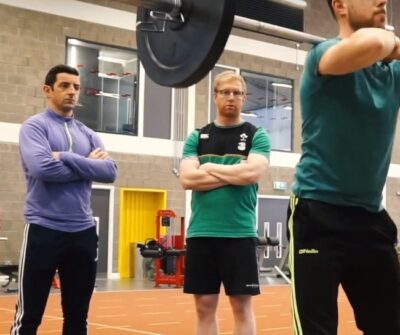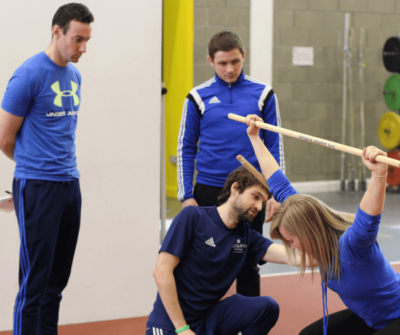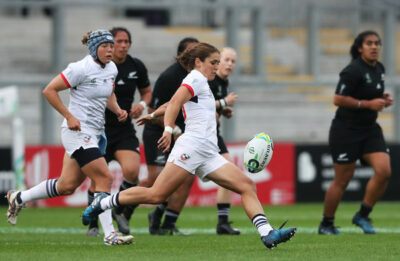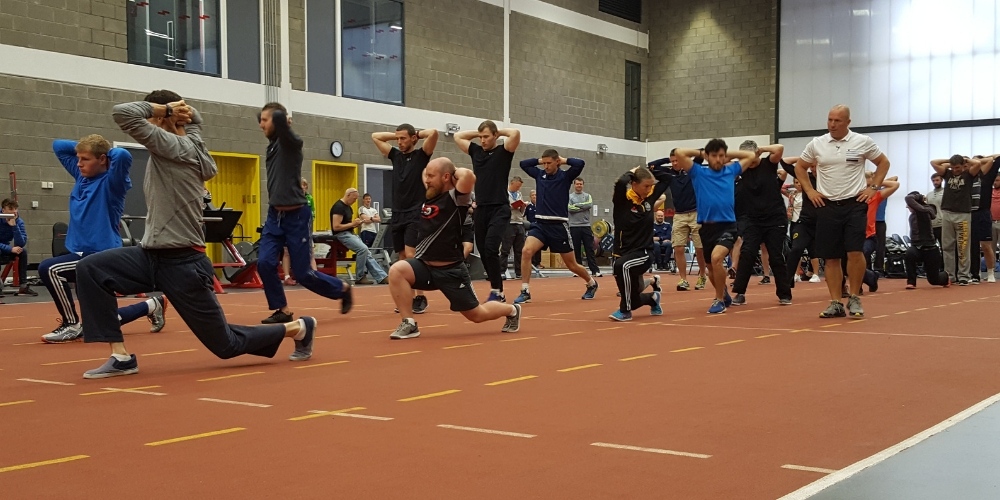S&C coaches live their lives split between two places – the gym and the playing field. Strength coaches’ primary concern is getting their athletes in top shape to perform on match day, and that involves a lot more than standing across from someone while they sit on a machine, counting their reps. Building body armour, promoting power, challenging speed and change of direction, preventing injury, warm ups, cool downs, sport-specific conditioning… the list of responsibilities goes on.
It makes sense, then, that many coaches struggle with the thought of leaving the field behind to emerge opposite a 50-something year old non-athlete trying to lose weight for the summer. How could you become relatable to someone whose only experience on a field was as a child? How do you move from programming a specific number meters over a week to teaching someone to do a proper press up?
In fact, you’re the best coach for the job.
According to a comprehensive 2018 survey, the ACSM named classic strength training, high intensity interval training, functional movement, bodyweight training, and working with a knowledgeable trainer among the top 10 fitness trends. Any competent, experienced S&C coach comes equipped with the perfect tools to track directly with what the general public needs.
Strength Training

Student Aiden O’Mahony and Dean Lester delivering coaching cues at a Resistance Training workshop
In the context of a team, we use strength training to develop specific qualities of our athletes. Maybe we’re trying to build muscle during the off season to build a foundation for power and speed. Maybe we’re trying to groove motor patterns that transfer to sport. Or maybe we’re bringing injured athlete back to playing form.
That being said, everyone should lift weights. From the youngest to the old, the ability to manipulate an implement outside of your body is a critical tool to human activity. Not only that, we know resistance training strengthens bone health, reduces risk of metabolic syndrome, promotes aerobic health, and builds muscle – whether to “tone” or “get jacked”.
Being knowledgeable about specific transfer of exercises opens you up to actually making a difference in clients lives. Clients will come to you complaining of a random shoulder pain, and your ability to identify which exercises are contraindicated and which will improve their health will prove invaluable. At the same time, you’ll be able to train around that shoulder pain to give them results.
Interval Training
I’m pretty sure this “trend” was originally borrowed from a strength and conditioning coach. High Intensity Interval Training is just an in-gym adaptation of what sports teams have been doing for years.
Manipulation of work-to-rest intervals is a key tenet of conditioning for sport. At a micro level, S&C teams identify exactly how long athletes are asked to move and at what speed, and then compare that to their rest. Then, they put those concepts in to conditioning, often asking more of the athletes during practice than they will ever see in a game. At a macro level, we know manipulating rest and work can train different energy systems to promote specific adaptations.
You’ll find that the general population cares much less about whether they’re prepared for battle. However, they do want the adaptations that come with interval training. Aerobic conditioning helps recovery and gets them back in the gym each day. Anaerobic training stimulates mitochondrial growth to facilitate better resting metabolism. Overall, people love the idea of sweating and getting a quick workout in.
Many in the general population criticize HIIT and injury risk by testing movements under fatigue. Strength coaches have the specific knowledge of how to work these intervals and avoid injury, as an injured athlete is out of the game. Your experience on the field will transfer seamlessly to a commercial gym setting.

Tutor William Hughes coaching the overhead squat at a Setanta College Functional Screening workshop.
Functional and Bodyweight Training
People are learning to love movement. Pushing, pulling, hinging, lunging, squatting and carrying are actually cool now. People want total body training that asks them to get out of their seat. The more information is spread, the more savvy the public gets about the consequences of poor function.
Careful control of one’s body in space identifies athleticism. S&C coaches use tons of tactics to develop stability, awareness, proprioception, and prowess in all ranges of motion. Follow this trend in to the regular world by knowing which functional movements to program. Rather than dancing around on a physio-ball with bands all over the place, you’ll know how to program basic squats, closed-chain body weight exercises, and multi-directional core stability for function.
With the massive spike in functional movement training came the popularity of group training. CrossFit, Boot Camp, Athletic Conditioning – whatever the name, people love the camaraderie of working alongside others to achieve a goal. Gyms are starting to mimic team training more and more.
Training for a specific function with a team of athletes seems oddly familiar.

Kimber Rozier clears the ball during the Women’s Rugby World Cup 2017 Semi Final match against NZ. Photo Credit: Getty Images
Knowledge and Experience
Finally, this trend has been a long time coming. Just look inside any commercial gym to see how rife the fitness industry is with incompetence. Any John or Jane who looks the part can become a trainer nowadays, much to the demise of those with an actual education.
But the general population is starting to pay attention. The ACSM shows standards are rising as people demand certification and experience. A simple Google search will provide a laundry list of free workouts and demos. Therefore, people aren’t going to pay for something they can get for free online.
Your experience with elite athletes already puts you on a pedestal to those in the general population. If you can carve bodies into shape for sport, you must have the knowledge to work with them. Yes, they have different goals, but your experience and knowledge answers a call in an industry that’s surprisingly lacking. And your drive to continue that education ensures you’ll dedicate the time to learning about your new clients.
You’ve already proved you’ll do the work by reading this article. Connect with the clientele you want to serve, and take advantage of the opportunity to build a new business.
References
1. Person. (2018, May 25). The Top 10 Fitness Trends You’ll See Everywhere This Year. Retrieved from https://www.menshealth.com/fitness/a19546137/top-fitness-trends-2018/
2. Kraemer, W. J., Ratamess, N. A., & French, D. N. (2014, March 24). Resistance training for health and performance. Retrieved from https://link.springer.com/article/10.1007/s11932-002-0017-7
3. Stone, N. M., & Kilding, A. E. (2012, October 23). Aerobic Conditioning for Team Sport Athletes. Retrieved from https://link.springer.com/article/10.2165/00007256-200939080-00002
4. Plisk, S. (n.d.). Anaerobic Metabolic Conditioning: A Brief Review of Theory, Strategy, and Practical Application. Retrieved from http://www.unm.edu/~lkravitz/Sports Physiology/Plisk.pdf
5. How Functional Is Movement Training For Fitness & Performance? | JRx. (2017, July 24). Retrieved from https://drjohnrusin.com/movement-training/


Leave A Comment